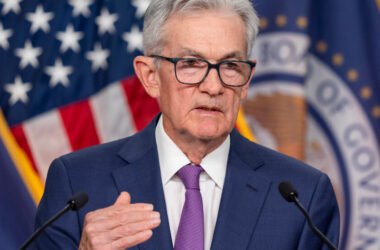Dr. John Wust doesn’t come across as a labor agitator. An experienced obstetrician-gynecologist from Louisiana, Dr. Wust spent the initial 15 years of his career running his own practice with colleagues. He didn’t anticipate benefiting from collective bargaining when he joined Allina Health, a large nonprofit healthcare system in Minnesota, in 2009.
However, his perspective changed as his group of over 100 doctors at an Allina hospital near Minneapolis voted to unionize. Dr. Wust, who discussed the potential benefits of a union with colleagues, expressed that doctors were feeling unable to address their unsustainable workload due to reduced input at the hospital.
“The way the system is going, I didn’t see any other solution legally available to us,” Dr. Wust said.
At the time of their union vote, they were one of the largest groups of private-sector doctors ever to do so. By October, a group consisting of approximately 400 primary-care physicians employed in clinics owned by Allina surpassed this record. According to the Doctors Council of the Service Employees International Union, the union representing these physicians, doctors from numerous facilities across the country have inquired about organizing over the past few years.
Furthermore, healthcare workers, particularly nurses, held eight major work stoppages last year — the most in a decade — and are on track to match or exceed that number this year. This fall, numerous nonunion pharmacists at CVS and Walgreens stores called in sick or walked off the job to protest understaffing, with many doing so for a full day or longer.
There are clear reasons behind these recent labor actions. Doctors, nurses, and pharmacists expressed that they are being asked to handle increasing workloads as staffing levels decrease, leading to exhaustion and concern about compromising patient care. Many mentioned that they were overwhelmed after the onset of the pandemic and that their work demands remained high.
However, the explanation goes beyond this, as a long-term consolidation of healthcare companies has left workers feeling powerless in large bureaucratic organizations. They argue that this trend has restricted their ability to exercise their professional judgment.
“People do feel put upon — that’s real,” noted John August, an expert on healthcare labor relations at the Scheinman Institute at Cornell University. “The corporate structures in healthcare are not evil, but they have not evolved to the point of understanding how to engage with health workers.”
Allina stated that it had made progress in reducing doctors’ workloads and was collaborating with healthcare workers to address outstanding issues. CVS indicated that it was making “targeted investments” in pharmacies to enhance staffing in response to employees’ feedback, while Walgreens affirmed its commitment to ensuring that workers had the support they needed. Additionally, Walgreens mentioned investing over $400 million over two years to recruit and retain staff members.
Workers from various fields have protested similar developments in recent years. Educators, college instructors, and journalists have gone on strike or unionized due to declining budgets and the rise of performance metrics that they believe are more suitable for sales representatives than for guardians of certain standards and best practices.
This trend is particularly noticeable in healthcare, where practitioners who were once highly esteemed are now feeling suffocated by the management hierarchy’s influence. As a result, there is a growing sense of worker consciousness among individuals who haven’t always exhibited one — a feeling that they are subordinates constantly at odds with their overseers.
“I realized at the end of the day that all of us are workers, no matter how elite we’re perceived to be,” remarked Dr. Alia Sharif, a colleague of Dr. Wust’s at Allina who played a significant role in the union campaign. “We’re seen as cogs in the wheel. You can be a physician or a factory worker, and you’re treated exactly the same way by these large corporations.”
‘We were all partners.’ Then came the metrics.
The specific details differ across healthcare fields, but the overall trend is consistent: a time when healthcare professionals had the autonomy and resources to perform their jobs effectively, followed by what they perceive as a shift to micromanagement.
For instance, as a pharmacy intern and pharmacist at CVS in Massachusetts in the late 1990s, Dr. Ed Smith noted that the stores were consistently well-staffed. He mentioned that pharmacists had the time to build relationships with patients.
It was around 2004 that Dr. Smith, who became a district manager in the Boston area overseeing about 20 locations for CVS, observed that CVS executives paid attention to input from pharmacists, making decisions based on their needs.
Dr. Wust reminisced about his time in an independent practice comprising roughly 25 doctors with a similar sense of nostalgia. “We were all partners,” he stated. “It was a relatively democratic work environment. Everyone had a say, and everyone’s concerns were heard.”
However, with time, consolidation and the emergence of larger healthcare corporations resulted in diminished influence for workers.
As pharmacy benefit managers, representing insurers and employers, acquired competitors, retail giants like Walgreens and CVS also made acquisitions to maintain market power. The chains closed many of the newly acquired locations, diverting more customers to existing stores while aiming to reduce costs, particularly labor costs, in response to drug price regulations by benefit managers.
Dr. Smith stepped down from his role as a district manager around 2015 and returned to being a frontline pharmacist, unwilling to supervise co-workers under what he considered suboptimal conditions. “I couldn’t ask my pharmacists to do what I couldn’t accomplish,” he explained.
Among his frustrations was the need to strictly limit each pharmacy’s staffing. Dr. Smith detailed how exceeding the labor budget, regardless of prescription volume, prompted calls from the district manager each week. CVS responded by stating that managers received guidance based on expected volume and other factors, with adjustments made to ensure sufficient staffing.
Several current and former CVS and Walgreens pharmacists, including Dr. Smith, mentioned that their stores’ staffing hours for pharmacists and pharmacy technicians had decreased in most years in the decade leading up to the pandemic. They also described being held to increasingly stringent performance metrics, such as the speed of responding to phone calls, the percentage of prescriptions filled for longer durations, and calls made to encourage prescription fills or pickups.
While Walgreens invoked a change last year by eliminating “task-based metrics” in performance reviews for pharmacy staff members but maintained their use for tracking store-level performance, CVS mentioned having reduced the number of metrics being tracked in recent years.
At Walgreens, many pharmacy managers reported to a districtwide retail supervisor rather than a supervisor trained as a pharmacist, coinciding with more emphasis on performance metrics, according to Dr. Sarah Knolhoff, a former Walgreens pharmacist.
The transition for doctors and nurses occurred roughly at the same time. As independent medical practices discovered that they had lost negotiating leverage for reimbursement rates with insurers, many doctors joined larger health systems to secure better deals due to their size. The Affordable Care Act of 2010, along with federal rule-making efforts, further incentivized consolidation by linking reimbursement to certain health outcomes, leading to administrators evaluating medical staff based on similar metrics while implementing various incentives and mandates.
Doctors and nurses found these changes challenging to accept, with Dr. Frances Quee, president of the Doctors Council, sharing that corporate directives began interfering with patient care methods. Dr. Matt Hoffman, a primary care doctor at an Allina clinic that unionized in October, expressed discontent over being incentivized to discuss high-risk or chronic medical conditions with patients, even if those conditions were well managed and not relevant to a visit.
Increased reliance on management theories from other industries to minimize excess capacity was noted by Dr. Wust, who cited the removal of buffers for patient emergencies at Allina as an example. Allina responded by stating that adjustments could still be made to achieve incentives related to high-risk conditions and that the health system had permitted clinics to experiment with improving workflow efficiency.
Other health professionals voiced complaints about the metrics they are evaluated on, stating that they made them feel more like retail clerks or dining staff than medical professionals.
Adam Higman, an expert from the consulting firm Press Ganey, acknowledged that the increased use of metrics and consolidation aimed to lower U.S. healthcare costs and ensure patient benefits. However, he also highlighted the need for health systems to involve doctors and nurses more in developing and implementing these metrics in order to reduce tensions and potential organizing efforts.
‘I would not have put unions and physicians in the same mind.’
The strains felt by healthcare workers were magnified during the pandemic. Pharmacists, in particular, reported being overworked during the rollout of Covid-19 vaccines, leading to concerns about patient safety. Doctors and nurses faced an influx of medical inquiries from anxious patients and pressure from administrators to accommodate more patients despite overloaded facilities.
Once the pandemic reached its peak, conditions barely improved, leading to running deficits amid inflation and a shortage of doctors and nurses. This prompted professionals who had never previously considered union membership to start organizing. Dr. Alia Sharif, who joined Allina in 2009, mentioned reaching out to the Doctors Council last year for assistance with unionizing her colleagues, illustrating a shift in mindset regarding unions within the medical community.
Dr. Quee, the union president, reported a significant increase in doctor inquiries since the second group of Allina doctors unionized last month, leading to the hiring of more organizers. Pharmacies are also reaching out, as Dr. Smith took on the additional role of labor organizer after a CVS district manager was fired for refusing to close some stores on the weekend. The subsequent coordinated sick days and walkouts in Kansas City prompted CVS to address understaffing concerns.
CVS acknowledged unexpected pharmacy closures due to staff sick days in September and stated that executives met with pharmacists to address their concerns. Dr. Smith expressed frustration with the lack of improvements over the years, shifting from requesting to demanding changes.








